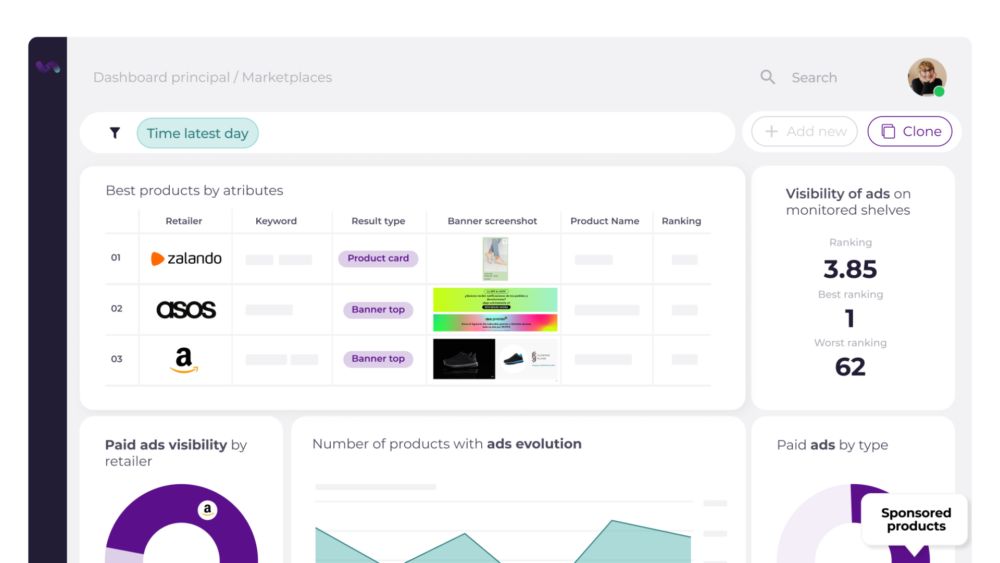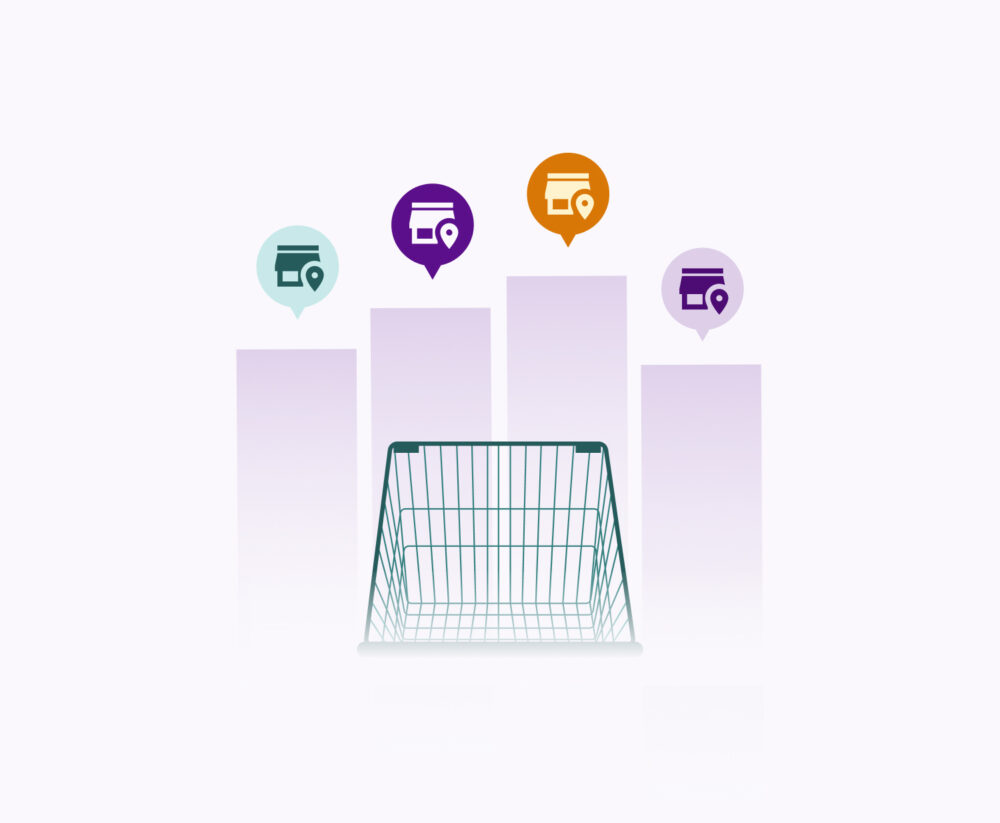What to Expect from Retail Media Networks in 2025?
The Unstoppable Rise of Retail Media Networks
2025 will mark a turning point for Retail Media Networks (RMNs). With a projected 6% growth in global advertising investment and a transformation that redefines the relationship between brands, retailers and consumers, these platforms are no longer an experiment: they are at the core of an omnichannel strategy.
Several factors have driven this growth:
- Shifting consumer behaviour: The pandemic accelerated the adoption of e-commerce, leading more consumers to make online purchases.
- The demise of third-party cookies: Privacy regulations and the phasing out of third-party cookies have increased the value of first-party data held by retailers.
- Demand for personalization: Consumers expect tailored experiences. Retail Media Networks allow brands to deliver relevant ads based on real purchase behaviours.
This year will mark the operational maturity of networks such as Amazon Ads or Walmart Connect, which already capture 75% of the US market. It will also lay the groundwork for a new era. Artificial intelligence, physical-digital integration and the standardization of metrics will be key. With a market that will exceed $106 billion in 2027 according to eMarketer, 2025 is defined by two opposing forces. On the one hand, the technological simplification driven by AI. On the other, the increasing complexity of a fragmented ecosystem, between On-Site, Off-Site and In-Store Retail Media.
This article explores how to navigate this duality. It also offers a detailed map of the five trends that will reconfigure Retail Media Networks in the coming months.
1. Operational Maturity: The Era of Efficiency
As Retail Media Networks have evolved, operational efficiency has become a priority. The following areas stand out in this field:
Unified self-service
RMNs are eliminating technological fragmentation with integrated platforms that serve to democratize Retail Media. They are also adopting self-service models that allow brands to manage their campaigns autonomously. The transition towards more intuitive interfaces and integrated tools facilitates the execution of cross-channel advertising campaigns (which combine digital and physical formats in a single interface) without directly depending on the retailer. This autonomy streamlines processes and allows brands to respond quickly to market dynamics.
AI-driven automation
Artificial Intelligence is revolutionizing the management of Retail Media campaigns in three key areas:
- Budget optimization: Predictive algorithms are used to redistribute investments across different RMNs, based on their historical performance and seasonal trends.
- Analysis of large volumes of data: Using advanced algorithms, brands can analyze large volumes of data to identify consumer behavior patterns, optimize audience segmentation and free up human resources to focus on more creative and high-level strategies.
- Creative generation: Dynamic Creative Optimization (DCO) systems produce hundreds of banner variations in seconds, depending on the target audience, context, geographic location or previous performance.
Priority on ROI
Moving from CPM to real impact, ROI will be seen as the supreme metric. With advertising budgets under constant scrutiny, brands are focusing on maximizing return on investment. This involves a rigorous evaluation of performance metrics, the implementation of more accurate attribution models and continuous optimization of bidding strategies and ad placement.
The evolution towards operational efficiency is not optional: with a Customer Acquisition Cost (CAC) 32% lower on automated networks (according to Criteo), RMNs that do not adopt these models will become obsolete before 2026.
2. Global Expansion and Consolidation
The Retail Media landscape is undergoing global expansion and consolidation, influenced by various market dynamics.
New regional “unicorns”
In 2025, the dominance of Amazon (75% of the US market) and Walmart Connect (31.6% growth in 2024) will face emerging competition. The emergence of regional Retail Media Networks that achieve “unicorn” valuations (companies valued at over $1 billion) is anticipated:
- Asia-Pacific: The Japanese Retail Media Network Seven & I Holdings integrates 78,000 “7-Eleven” stores with purchase data and its 2025 revenue target will be $1.2 billion. This region is projected to grow 47% in RMN advertising investment, driven by digital commerce in India and Vietnam.
- Europe: The Ahold Delhaize Retail Media Network, with coverage in 11 European countries and covering 21 store chains, reached $800 million in 2024 and expects to exceed $1 billion in sales in 2025.
- Latin America: Mercado Libre Ads, with 152 million active users and its own logistics in 18 countries, aims for e-commerce leadership in the region.
This trend reflects an adaptation to the cultural and consumption particularities of each region, offering more contextualized advertising solutions.
Strategic partnerships
Under pressure from the giants, collaborative models are emerging. These partnerships allow medium-sized networks and retailers to expand their advertising reach beyond their own channels, integrating with third-party platforms and media outlets. For example, partnerships between retailers and streaming platforms (such as Amazon and Twitch) or social media networks make it easier for brands to reach wider and more diverse audiences, creating more integrated and effective advertising ecosystems.
This year, RMNs that don’t form alliances or position themselves in regional niches will be left out of a market where 80% of the top 100 US retailers already operate their own networks. Consolidation is not an option but a requirement for survival.
3. In-Store Media Integration
The convergence of the digital and physical worlds is redefining the shopping experience and advertising strategies.
Physical digitalisation
Physical stores are incorporating digital technologies to become interactive media and enrich the customer experience. Screens, digital signage and IoT devices allow brands to display dynamic and personalized content in real time. For example, 15% of European supermarkets use DOOH (Digital-Out-of-Home) with real-time targeting.
This digitalization facilitates the adaptation of advertising messages according to the customer profile, available inventory or even external factors such as weather. This creates a more immersive and relevant shopping experience.
Creative challenges
Implementing digital media in physical environments carries the risk of overwhelming the customer with advertising and creating irrelevant experiences.
Brands must develop contextualised creatives that capture attention in busy spaces, ensuring that messages are clear and attractive, in varied formats and sizes. In addition, it is crucial to ensure that the technology used is intuitive and doesn’t interfere with the shopping experience, but complements it harmoniously.
4. Personalisation and Innovative Formats
The evolution of consumer expectations is driving brands to adopt more personalized and innovative strategies.
AI against ad fatigue
As mentioned in the previous section, ad fatigue is one of the risks associated with implementing digital advertising media in physical environments. Retail Media Networks are adopting advanced AI technologies to offer personalization at scale without generating advertising saturation. Artificial intelligence analyses consumer behaviour within retailer platforms, allowing for more precise segmentation and optimizing ads in real time.
To combat ad fatigue, algorithms are being developed that adjust the frequency and content of ads based on user interaction. This ensures a seamless experience without being invasive. It also helps brands improve the relevance of their messages and increase conversion within retailer ecosystems.
Co-created and sponsored content within retail platforms
RMNs are evolving beyond traditional ads by integrating co-created and sponsored content directly into online shopping experiences. Retailers are allowing brands to generate content that appears in strategic sections of their sites and apps. Content can range from product recommendations and interactive buying guides to video shopping experiences.
This type of content improves the user experience. It also increases engagement and dwell time on the platform, boosting conversion rates. The most advanced networks are exploring the use of augmented reality and immersive experiences to offer real-time product demonstrations within their digital ecosystems.
5. Measurement and Transparency
Emerging measurement standards
One of the most significant challenges for Retail Media Networks has been the lack of standardization in metrics. In 2025, an evolution towards unified measurement systems is expected. This will allow brands to compare the impact of their campaigns across different retailer networks.
Leading platforms have adopted unified dashboards with real-time information. These display data on attributable sales, ad engagement and conversion metrics within the Retail ecosystem. In addition, they are incorporating advanced attribution models based on machine learning, which improves accuracy when measuring how advertising influences purchasing decisions.
Data privacy and security in Retail Media
In 2025, RMNs will prioritize data privacy and security. This responds to stricter regulations, such as the EU’s AI Act, and growing consumer concerns. Instead of relying on third-party cookies, platforms will use first-party data from retailers. This will allow them to effectively segment audiences without compromising privacy. They will also implement strategies such as data clean rooms, which allow campaigns to be analyzed without accessing sensitive data.
On the other hand, let’s not forget Retail Media In-Store, which must offer clear opt-out options in physical stores, such as the facial masking technology offered by Verkada.
Conclusion: The year of professionalization
In 2025, Retail Media Networks will move beyond the experimental phase to become mature ecosystems. In this environment, companies that:
- Combine AI with relevant creatives to deliver engaging and effective user experiences.
- Respect privacy without sacrificing personalization, adopting solutions based on first-party data and anonymization technologies.
- Offer clear metrics that link Retail Media advertising to sales, promoting trust among brands and advertisers.
Brands and retailers that strategically adopt these trends will be better positioned to maximize the impact of their Retail Media investments. Competition will be more intense, but so will the opportunities for innovation and differentiation in an environment that demands greater accuracy, efficiency and advertising relevance.





